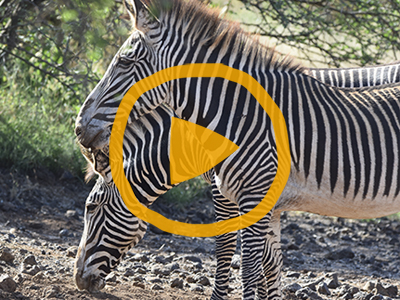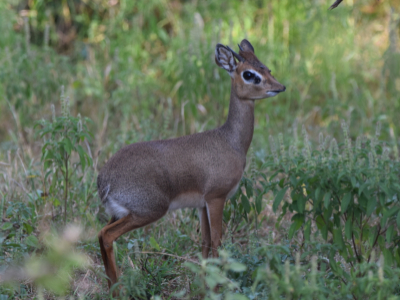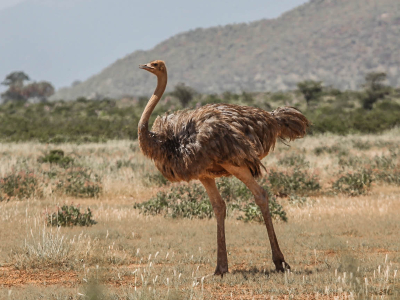The unusuals
THE UNUSUALS
It’s not just lions who call Kenya’s Meru National Park home. Meru boasts hundreds of wildlife species. Here, our conservation team shine the spotlight on the more unusual
DIK-DIK
Skittering off into the bush, the dik-dik is one of the most shy and elusive species in Meru. Their elongated snout is highly distinctive and serves as a cooling mechanism against extreme heat. These tiny antelopes mate for life and rarely stray far from their partner. Like so many other species, rapid habitat conversion and destruction has affected their populations. However, dik-diks are resilient and so far their numbers have remained stable as they adapt to living in human modified environments.

GREVY’S ZEBRA
Restricted to a few isolated areas in Meru, the Grevy’s zebra is highly distinctive, with long narrow stripes, a white belly, large rounded ears and a brown muzzle. They are the largest equid species in the world. However, due to extensive habitat loss and pressures from hunting, the Grevy’s zebra is the most endangered species of zebra. In fact, they have experienced the largest range contraction of any African mammal. Current figures estimate there are fewer than 2,000 and only a handful live in Meru.
SOMALI OSTRICH
Striding across the savannah, the Somali ostrich, also known as the blue-necked ostrich, is one of two ostrich species. They are huge, reaching up to 275cm in height and are unmistakable by their blue neck and legs. They were once found across Africa, Asia and the Arabian Peninsula, but prolific hunting has decimated their numbers and they are now classified as Vulnerable by the IUCN. Hunters have long prized their feathers and collected their eggs.
GENET
Under the cover of night, you might spot a genet in Meru. Genets are small carnivores, found across vast areas of Africa and the Middle East. There are approximately 14 species, all of which vary in appearance and habitat. In Meru, you may be able to find the common genet or the large-spotted genet, climbing trees to hunt birds or hunkering down in low rocky outcrops. They are largely solitary and secretive creatures. Unfortunately, genets are hunted as pests and for bushmeat in some areas, but their numbers remain stable.

WHITE-BACKED VULTURE
White-backed vultures soar above the Meru landscape. They are nature’s most successful scavengers, clearing away carcasses and preventing the spread of diseases. However, due to habitat loss, poaching and the increasing use of pesticides and poisons, vultures are vanishing quickly across the world, including Kenya. The white-backed vulture is one of four vulture species classified as Critically Endangered by the International Union for the Conservation of Nature (IUCN).
PUFF ADDER
Some of Meru’s more unusual residents are more dangerous than others. The puff adder is no exception. The puff adder is responsible for more bites and fatalities in Africa than any other snake. It blows out air as a warning and puffs up, hence its name. When the snake bites, it releases cytotoxic venom, which destroys body tissue. Puff adders are an important part of the ecosystem, eating and controlling rodents and preventing the spread of diseases.
LAST LIONS OF MERU?




